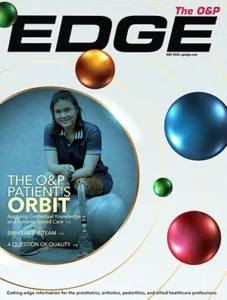As anyone in O&P knows, physician notes are notoriously lacking in description for orthotic necessity. In a recent case, I found myself considering L-1845 or L-1852 for a patient. I knew the item was going to require adjustments to fit, but I didn’t feel her limb would require custom. I found myself gravitating toward the L-1845 just so I didn’t have to do as much paperwork shuffle between my office and the physician’s office to get detailed notes for the patient’s file and the payer’s claim. The LCD seems vague about who documents whether a patient needs an OTS or custom-fitted orthosis. I also found it vague about what is required to determine the medical necessity of custom fitted versus OTS. Since both codes pay the same, I became curious as to how others made the distinction between these two levels of service.
Several practitioners told me that they don’t believe the physician documentation needs to indicate OTS or custom fit. From the Medicare Knee Orthoses LCD: “For codes L-1832, L-1833, L-1843, L-1845, L-1850, L-1851 and L-1852, knee instability must be documented by examination of the beneficiary and objective description of joint laxity (e.g., varus/valgus instability, anterior/posterior Drawer test).” This is the part that must be in the physician’s medical record notes. If the physician doesn’t need to specify OTS or custom fit, our notes must explain why we had to custom fit the device and how our actions constituted the substantial modifications required for a custom fit.
Support authors and subscribe to content
This is premium stuff. Subscribe to read the entire article.




